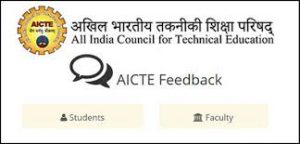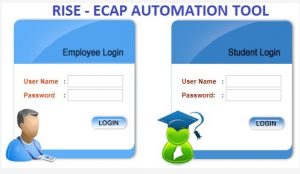Innovations In Teaching and Learning ECE
CodeTantra's unique intelligent interactive learning platform guarantees that the learner will be able to write code on completion of the learning program. The platform handholds the student by teaching one simple concept at a time, followed by numerous drilling exercises till the concept is transformed into a skill. The platform's automated learn-code-and-learn technique builds confidence and by continuous and incremental application of concepts. The best teaching practices recommended by Bloom's Taxonomy have been employed in building this unique Learning-by-Doing platform.
Objective:-
Every engineering graduate must be able to write code "period".
Significance of Results:-
• Interactive learning• Self Practice intuitive
• Live Hands-On Practice
• Interactive Error Analysis and Feedback
• Produce Executable Programms
• Instant Contextual Help
Objectives
1. To strengthen teachers' skills in making teaching-learning process more effective 2. To attract and retain learners' attention 3. To generate interest across different levels of students 4. To develop lesson plans that are simple and easy to follow 5. To make class more interactive and interesting 6. To focus on student-centered approachSignificance of results:
• Best motivation. • Clear image. • Save energy and time. • Capture attention. • Reinforcement to learner. • Gain & hold student interest. • Stimulate the development of understanding and attitudes.ECE Video Lectures
The objective of the seminar is to give students opportunity to participate in methods of scientific analysis and research procedures.
Significance of Results:
• Improves communication skills
• Create interest in student
• Improves teacher and student interaction
• Improves Students Academic Performance
• Creates awareness about the topic
• Improve the coordination among the students
Click for Seminars
Objectives:-
1. Creating of a Strong Desire: The basic aim of demonstration is to create a very strong desire is the mind of prospect to possess the product, which he wants to sell. It is demonstration that has the ability, to desire to a strong sense of possession.
2. Generation of Positive Attention towards the Product: Many a times the prospects have a state of wavering mind, as they are not fully attentive of product. Creation of positive attitude towards the product is the part and parcel of persuasion process in the game of selling.
3. Helping the Prospect to Come to Definite Decision to Buy: Mere presentation is a oral expression or description of the product. It has effect. However, the effect is not generating any positive change of attitude and action. It is demonstration that applies multi-sense approach, which definitely helps the customer or prospect to come to positive conclusion. That is, he may be deciding to buy or going for a product.
Significance of Results:-
• This strategy improves the understanding of complex skills and principles.
• Students can pay their attention and follow along with the learning process.
• Knowledge becomes permanent because this method requires different human senses.
• Students are motivated to study and gain necessary skills.
• The psychomotor objective is easily achieved through this method.
• No time is wasted because students see the process live and understand how to apply theoretical knowledge practically.
Click For Application Demonstration
Objective:-
The objective of role playing is to learn, improve or develop upon the skills or competencies necessary for a specific position.Significance of Results:-
• Students immediately apply content in a relevant, real world context.Objective:-
The Objective of the brainstorming session is to generate many creative ideas to answer a specific goal. It is best to express the goal as a question.
Significance of Results:-
Encourages Critical ThinkingWhich makes sense since brainstorming is meant to solve problems.
Gets You Out of Your Head
As Joe Master noted, we all walk into meetings with our own ideas, but the act of brainstorming forces us to consider and examine other people’s ideas.
Brainstorming Builds Teams
Since brainstorming is a collaborative experience, no one person walks out of the meeting taking ownership of the results, thus it an absolute team effort.
Brainstorming
Objectives:-
1. To provide a safe space and learning environment for young people without fear of judgment, misunderstanding, harassment or abuse.2. To increase social connectedness and create a sense of belonging within supportive peer networks.
3. To provide positive role models, positive peer influences and opportunities which help young people to develop a positive self concept, self acceptance and high self esteem.
4. To prevent the onset or further development of mental health problems including depression, anxiety, self harm and suicidal ideation.
5. To increase confidence and to develop and enhance communication and social skills.
6. To empower young people to build personal resilience and improved help-seeking behaviour through increased knowledge of available support, reduced stigma associated with mental health difficulties and help-seeking, the development of positive coping strategies and the development of skills needed to access help.
7. To foster future thinking and optimism and to widen young people’s understanding and beliefs of the opportunities available to them.
Significance of Results:-
• Students receive more time for individualized learning.• Direct interaction between students promotes active learning.
• Peer teachers reinforce their own learning by instructing others.
• Students feel more comfortable and open when interacting with a peer.
• Peers and students share a similar discourse, allowing for greater understanding.
• Teachers receive more time to focus on the next lesson.
Peer Teaching
Collaborative learning is a method of instruction that basically involves grouping students to work together towards a common academic goal. The method is based on the theory that knowledge is a social construct that educational experiences that involve interaction and social exchange, that are contextually relevant and engaging and are student-centered, lead to deeper learning. Experts in collaborative learning claim that the active exchange of ideas within groups of students promotes critical thinking and there seems to be quite persuasive evidence that teams engaged in cooperative learning achieve at higher levels of thought and retain information longer than students who work solely as individuals. Collaborative learning creates a role shift between learners and teachers. The responsibility for the process is placed on the learner, in the role of researcher of his/her field of study. By engaging in discussion and taking responsibility for their learning, students further develop their critical thinking.
Significance of results:-
• Develops higher level thinking skills
• Promotes student-faculty interaction and familiarity
• Builds self esteem in students
• Enhances student satisfaction with the learning experience
• Promotes a positive attitude toward the subject matter
• Develops oral communication skills
• Develops social interaction skills
• Creates an environment of active, involved, exploratory learning
• Uses a team approach to problem solving while maintaining individual accountability
• Encourages student responsibility for learning
• Involves students in developing curriculum and class procedures
• Students explore alternate problem solutions in a safe environment
• Stimulates critical thinking and helps students clarify ideas through discussion and debate
• Enhances self management skills
• Modeling problem solving techniques by students' peers
• Promotes higher achievement and class attendance.
• Creates a stronger social support system
• Creates a more positive attitude toward teachers, principals and other personnel by students and creates a more positive attitude by teachers toward their students
• Promotes innovation in teaching and classroom techniques
• Classroom resembles real life social and employment situations
• Students practice modeling societal and work related roles
• Increases leadership skills of students
Collaborative Learning
Objective:-
A quiz can function throughout a course as an informative feedback device allowing both the instructor and the students to see where they are excelling or need more focus. In order to effectively create exams and quizzes, it is important to establish and understand the learning objectives that are being measured.Use these assessment tools to test student knowledge of:
• Various effective teaching strategies• The strategy used to help students understand the perspectives of others
• The definition of a case study
Significance of Results:-
• Interactive platform: Today, quizzes are interactive platforms where students are not participating to take home a prize or get famous overnight, but to gain knowledge, seek opportunities to excel beyond academics and secure their future.• Changes scope of learning: Since questions are based out-of-syllabus and require critical thinking and extensive research, students get into the habit of innovative learning from an early age.
• Encourages team work: Students need to form teams while participating in quizzes, giving them an opportunity to hone their teamwork skills.
• Bridges academia-industry gap: During interviews, recruiters have found that Indian students are good in theoretical knowledge but are not privy to industry knowledge because of the current pattern of curriculum. Hence, there is still a huge gap in preparing our students for the market.
Class Room Quiz
Innovations by the Faculty in Teaching and Learning
| Sr.No | Innovation | Description |
| 1 | Integration of Technology-Enhanced Learning | To support blended learning, faculty members have integrated a variety of digital tools and learning management systems (LMS), including Google meet Google Classroom, and Moodle. Real-time assessment and student engagement are improved by the use of interactive tools like Mentimeter, Padlet, and Kahoot. |
| 2 | Outcome-Based Education (OBE) Framework Implementation | The faculty has adopted the OBE approach by clearly defining Course Outcomes (COs) and Program Outcomes (POs). Rubrics and assessment matrices are designed to measure the attainment of these outcomes, ensuring a structured learning process. |
| 3 | Flipped Classroom Model | Faculty members employ the flipped classroom model, which involves providing reading materials and pre-recorded video lectures beforehand. This makes it possible for class sessions to concentrate on debates, problem-solving, and practical exercises. |
| 4 | Problem-Based Learning | This method improves analytical thinking and application-oriented learning by presenting new material as a problem that has to be solved. |
| 5 | Z to A Approach | This approach explains the application part of a concept first before explaining the underlying theory, helping students understand its real-world relevance. |
| 6 | Project-Based and Experiential Learning | To improve their problem-solving abilities and close the gap between theory and practice, students engage in case studies, industry-sponsored initiatives, and real-world challenges. |
| 7 | Industry-Academia Collaboration | Industry experts give webinars, workshops, and guest lectures that are facilitated by faculty members. In order to expose students to real-world situations and cutting-edge technologies, industry trips and internships are encouraged. |
| 8 | Use of Simulation labs | The curriculum incorporates simulation programs using like MATLAB, Mentor Graphics, Xilinx, and Multisim to offer practical experience. |
| 9 | Use of Information and Communication Technology (ICT) Based Teaching Methods | For improved learning, ICT incorporates a variety of digital media formats, including text, photos, and videos, into interactive applications or presentations. |
| 10 | Tutorial Classes | By offering individualized instruction and skillfully resolving specific concerns, one-on-one interactions between professors and students can assist weaker pupils gain confidence. |
| 11 | Use of Website for Learning Resources | In order to improve self-paced learning, teachers post study materials on the college website, which students can access at any time. |
| 12 | Gamification and Interactive Learning Methods | To boost engagement, instructional strategies use components like leader boards, prizes, and interactive tests. |
| 13 | Customized Learning and Student-Centric Approaches | Personalized learning routes are created using AI-driven analytics that take into account each student's strengths and shortcomings. |
| 14 | Research-Integrated Teaching | In order to introduce students to the latest developments in their professions, faculty members integrate their research findings into class discussions. |
| 15 | Skill Development and Certification Programs | To improve employability, instructors advise students to enroll in MOOCs, NPTEL, Coursera, and Udemy certification programs. |
| 16 | Assessment and Continuous Feedback Mechanism | Students receive immediate feedback for development, and formative and summative tests are administered on a regular basis. Self-evaluation and peer assessment are also encouraged. |
| 17 | Inclusive Education and Support for Slow Learners | While advanced students are given difficult projects and research assignments, slow learners are supported with remedial classes, bridging courses, and special coaching. |
| 18 | Community and Social Responsibility-Based Learning | Teachers engage pupils in social responsibility programs, rural development projects, and community service projects to inculcate moral principles and contribute to society. |
| 19 | Sustainable and Green Practices in Learning | Concepts of sustainable development are incorporated into teaching strategies through eco-friendly projects, paperless assignments, and environmental conservation awareness campaigns. |
| 20 | Processes for Public Contribution and Faculty Recognition | The department has procedures in place to encourage innovative teaching, review faculty contributions, and make them publicly available. Clear goal-setting, methodical approaches, impact analyses, and thoughtful criticism are some of these procedures. |







